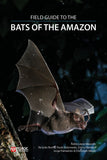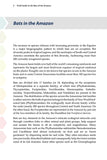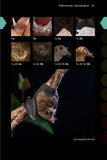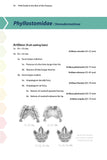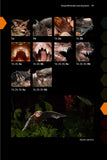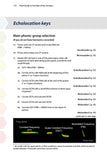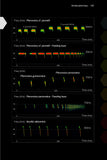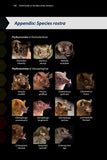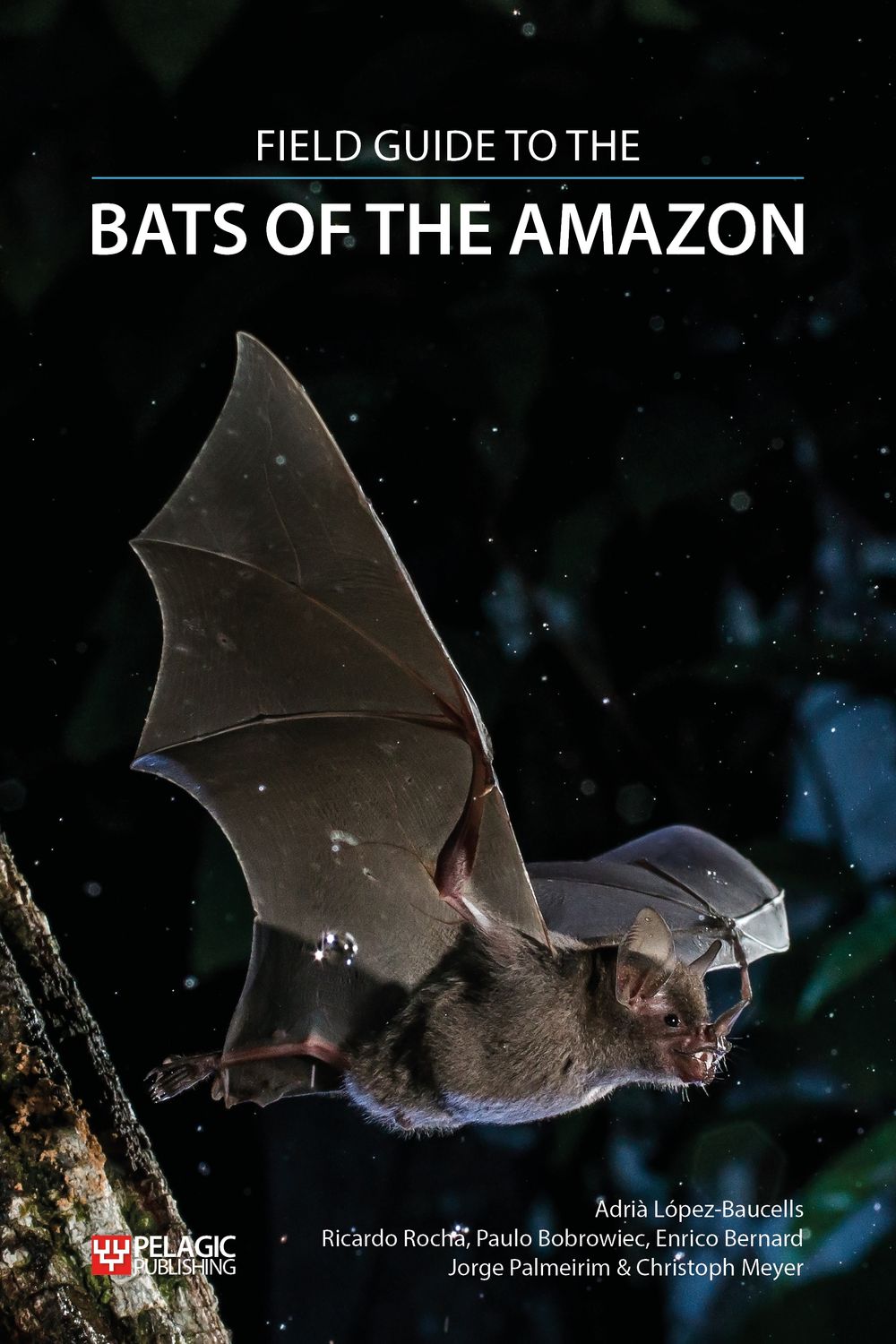
Field Guide to the Bats of the Amazon
- Species identification guide to the 160 species of bat described in the Amazon region
- Morphological identification key with stunning photographs
- Acoustic key for Amazonian bats illustrated with the echolocation spectrogram of most species
- The culmination of an almost unimaginable amount of challenging fieldwork. The first publication of its kind, it is beautifully illustrated, comprehensive and extraordinarily easy to use.
—Merlin D. Tuttle
- Amazon
- bats
- Brazil
- chiroptera
- new
Description
Do you think identifying bats in Europe or in North America is difficult? Well, try it in the Amazon. The planet’s green lung is home to the most diverse bat communities on the planet with more than 160 species currently described. Local species richness often surpasses 100 and for many, their identification in the field is, to say the least, challenging. This task will now become easier with the publication of the Field Guide to the Bats of the Amazon: a landmark handbook aimed at facilitating species identification in the field.
The book, written and designed by an international bat research team mainly based in the University of Lisbon in collaboration with the National Institute of Amazonian Research (INPA), is a guide for anyone conducting field work on bats in the Amazon or interested in bat biodiversity. It is largely based on previous published keys with modifications derived from both personal observations and years of field experience in the Brazilian Amazon at the Biological Dynamics of Forest Fragments Project (BDFFP), as well as a thorough revision of available bat keys and species descriptions.
The field guide also features the first acoustic key for Amazonian bats, illustrated with the echolocation spectrogram of most species. This represents a major step towards alleviating the daunting task of identifying the numerous species of aerial insectivorous bats that occur in the Amazon based on their echolocation calls. It further constitutes an important tool to improving the knowledge and optimizing surveys of aerial insectivorous Neotropical bats, a group which remains largely understudied.
The field guide provides an essential tool, not only for researchers, but also for bat conservationists, consultancies and anyone interested in Neotropical bats in general, and Amazonian bats in particular.
Readership
This book is written for a wide range of bat workers, ecologists and researchers, as well as travelling naturalists interested in the wildlife of the Amazon Rainforest.Table of Contents
Introduction
Bats in the Amazon
How to use this guide
Morphological key
Families
- Phyllostomidae
- Thyropteridae
- Furipteridae
-
Noctilionidae
- Mormoopidae
-
Emballonuridae
- Vespertilionidae
- Molossidae
- Natalidae
Echolocation keys
Appendix I. Species rostra
Authors
Illustrators
References
Reviews
- ...not only a profound and detailed identification key covering a significant proportion of the world’s bat species – the many fascinating photographs and drawings of bats and their body parts give a deep insight in the way how evolution can vary basic morphological traits.
—Dr Christian Dietz, www.fledermaus-dietz.de - Identifying bats accurately is a hard task even for well-trained bat biologists, but identifying Amazon bats—the world’s largest assemblage of these elusive mammals—is a much more difficult task. The Field Guide to the Amazon Bats is a much-needed and timely book that reflects the deep expertise of the authors, and their commitment with bat research and conservation. The organization of the morphological and echolocation keys and the amazing illustrations make the guide easy to use. This book is the result of a truly masterful effort, and is among the best field guides I have ever read. It will be of great interest to ecologists, zoologists, eco-epidemiologists and conservation biologists.
—Ricardo Moratelli, Fundação Oswaldo Cruz, Rio de Janeiro - I congratulate the authors for being able to put themselves so well in the shoes of readers who might use this field guide and be unfamiliar with the bats of the region.
—Jon Hall, Mammalwatching.com - The introduction is very informative, and the following sections take us to detailed identification keys of each family of Amazonian bats. But what makes this field guide so special and enjoyable are the multiple pictures, showing details of the face, wings, body, teeth, etc., of the different bat species, but also bats in their natural habitat, and the authors at work.
—Alice Poirier, Field Projects International, Mammal News - ....an invaluable reference work for field biologists studying bats in the Amazon Basin.
—Danny Brass, National Speleological Society News - ...a remarkable book, well-worth reading and rereading if you want to gain an appreciation of how field work is done and understand the way in which observation can lead to novel insights into the biology of “everyday creatures” in their natural setting. For myself, it reminds me of my formative days while becoming a field biologist. I recommend the book highly.
—William Douglas de Carvalho, Journal of Mammalogy - In conclusion, the book provides the means for a non- specialist (even a non-scientist) to identify the vast majority of Amazonian bats to species. Bat biologists working elsewhere in the tropics can only dream of having such a useful adjunct to field research.The easy and accurate species identifications made possible by this book will surely speed understanding of the ecological roles and population status of Amazonian bats. Every faunal region — and every field biologist handling bats — should have one!
—Bruce D. Patterson, Acta Chiropterologica
About the Author
Adrià López-Baucells started working with the Bat Research Group, Granollers Museum of Natural Sciences (Catalonia), in 2005. Since then he has collaborated on several projects in fields such as habitat selection, biogeography, behaviour, and migration. He finished his BSc in Biology at the University of Barcelona in 2010 with a final project on neotropical bats based on fieldwork undertaken in Colombia. His MSc thesis was carried out in Sydney (Australia) on behavioural ecology and physiology in megachiroptera. Currently, he is studying as a PhD student under the supervision of Dr. Christoph Meyer, and Prof. Jorge Palmeirim. His PhD project uses autonomous ultrasound recording stations as a means of investigating the long-term impact of forest fragmentation on aerial insectivorous bats.
Ricardo Rocha has a BSc in Biology by the University of Lisbon and MSc in Conservation Science by Imperial College London with thesis dedicated to São Tomé endemic birds’ response to agricultural intensification. Following his MSc, he worked on the ecology of seabirds and endemic reptiles of the Selvagens archipelago (Portugal) and then moved to the Metapopulation Research Centre (Finland) to investigate the efficiency of Malagasy protected areas in reducing deforestation. He has since worked with bird and bat ecology in Madagascar, Kenya and Brazil. His PhD, based at the Universities of Lisbon and Helsinki and supervised by Christoph Meyer, Jorge Palmeirim and Mar Cabeza, addresses the effects tropical forest fragmentation on the spatiotemporal dynamics of phyllostomid bat communities. He has recently moved to the University of Madeira where he lectures biosystematics and zoology.
Paulo Bobrowiec is a bat researcher at the National Institute for Amazonian Research (INPA). He undertook a BSc in Biological Science at the Universidade Federal de Uberlândia and both a MSc and PhD at INPA. His main area of expertise is bat ecology and community structure, feeding strategies, and bat pollination and seed dispersal. His MSc was focused on the effect of secondary vegetation on bat communities, while his PhD was devoted to the feeding ecology of D. rotundus.
Enrico Bernard is a bat researcher and Professor of Conservation Biology at Universidade Federal de Pernambuco, Brazil. He carried out his BSc in Biology in the Universidade de São Paulo in Ribeirão Preto. His MSc was conducted in Ecology at INPA (Manaus), where he worked on the vertical stratification of bat communities. His PhD was obtained from York University, Toronto, Canada, and focused on the effects of forest fragmentation on Amazonian bats.
Jorge Palmeirim is Associate Professor at the University of Lisbon and member of its cE3c research center, where he coordinates the Conservation Ecology. He is also a member of the IUCN Species Survival Commission (Chiroptera Specialist Group). He studied Biology at the Universities of Luanda and Lisbon, followed by an MA and PhD in Systematics and Ecology at the University of Kansas. His main research interests are the ecology and conservation biology of bats and birds, and tropical ecology.
Christoph Meyer is a lecturer in Global Ecology and Conservation at the University of Salford, United Kingdom, and external collaborator of cE3c, University of Lisbon, Portugal. He holds an MSc degree from the University of Würzburg and a PhD from the University of Ulm (Germany). His research centres on investigating the effects of habitat fragmentation and land-use change on tropical bats, and he has a considerable track record of conducting ecological and conservation-related studies on bats in various tropical countries, including Brazil.
Bibliographic Information
 176 pages
176 pages - 558 colour photographs, 128 b/w illustrations
- BISAC SCI070030, NAT019000, NAT014000, TRV024020, TRV024050
- BIC PSVW7, WNCF, RGBL, 1KLSB, 1KLSC, 1KLSR, RNKH






